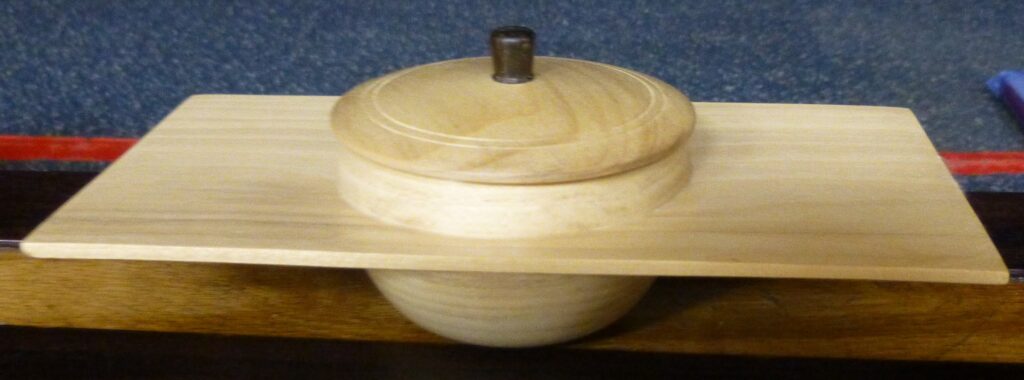Before this evening’s demonstration started there was a brief discussion regarding progress of the carousel challenge, and Geoff and Chris subsequently spent much of the evening in a huddle over the prototype.
Mick Denton asked if there was any interest in a club visit to the Proops Brothers shop in Leicestershire. A number of people said yes, but it was apparent that more would be required to make it a worthwhile for Proops to make special arrangements for us. As some will already know, Proops sell a wide variety of hobbyist and craft items, and visits in the past made for a good day out, complete with a tour around the shop and facilities. www.proopsbrothers.com
Our demonstrator tonight was Adrian Finch who kept us guessing as to what he was making until well on with the process. He used two pieces of an unknown hardwood, themselves glued together from smaller pieces. Both pieces were approx 150mm diameter x 75mm thick.
The first piece was mounted on a screw chuck, the end trued up and a tenon recess cut into it.
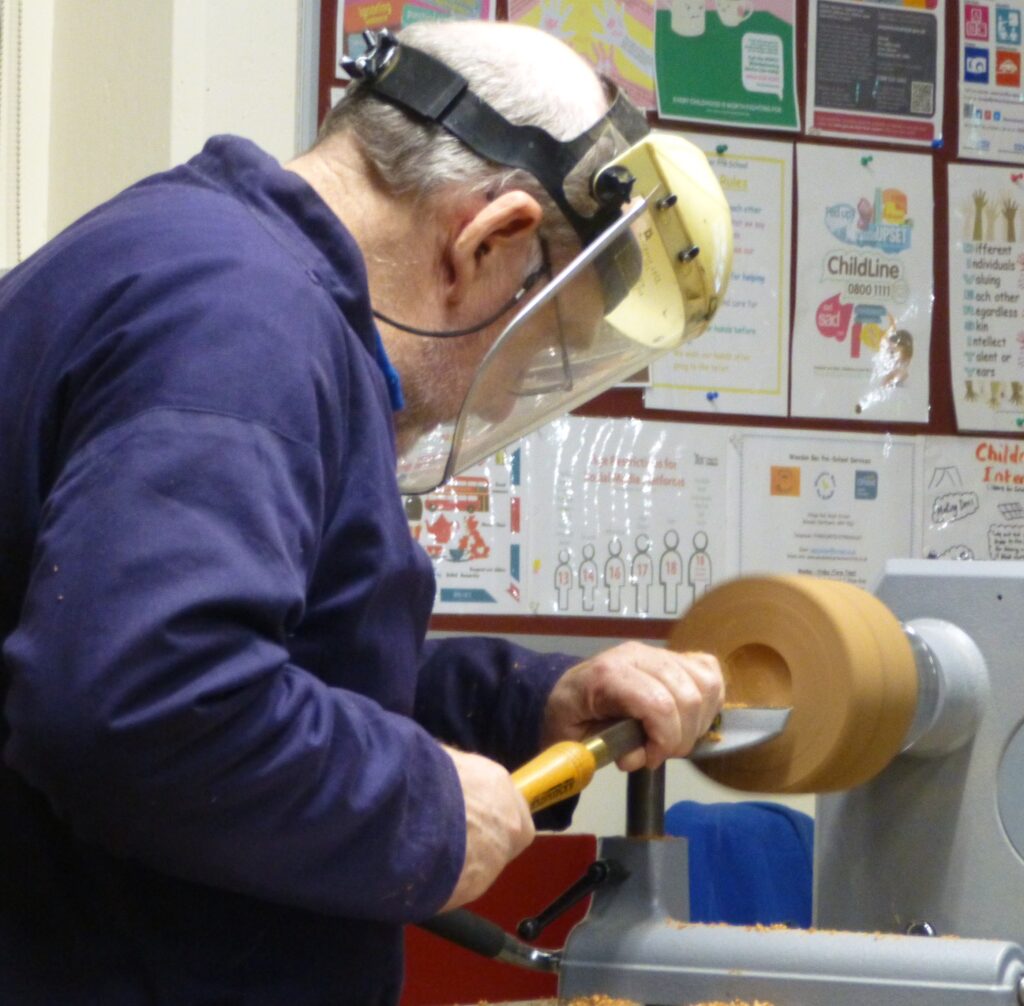
Adrian reversed it onto the chuck, centred a template onto it and used this to mark out three holes for drilling with a forstner bit. Once drilled, he noted the depth on the circumference of the blank.
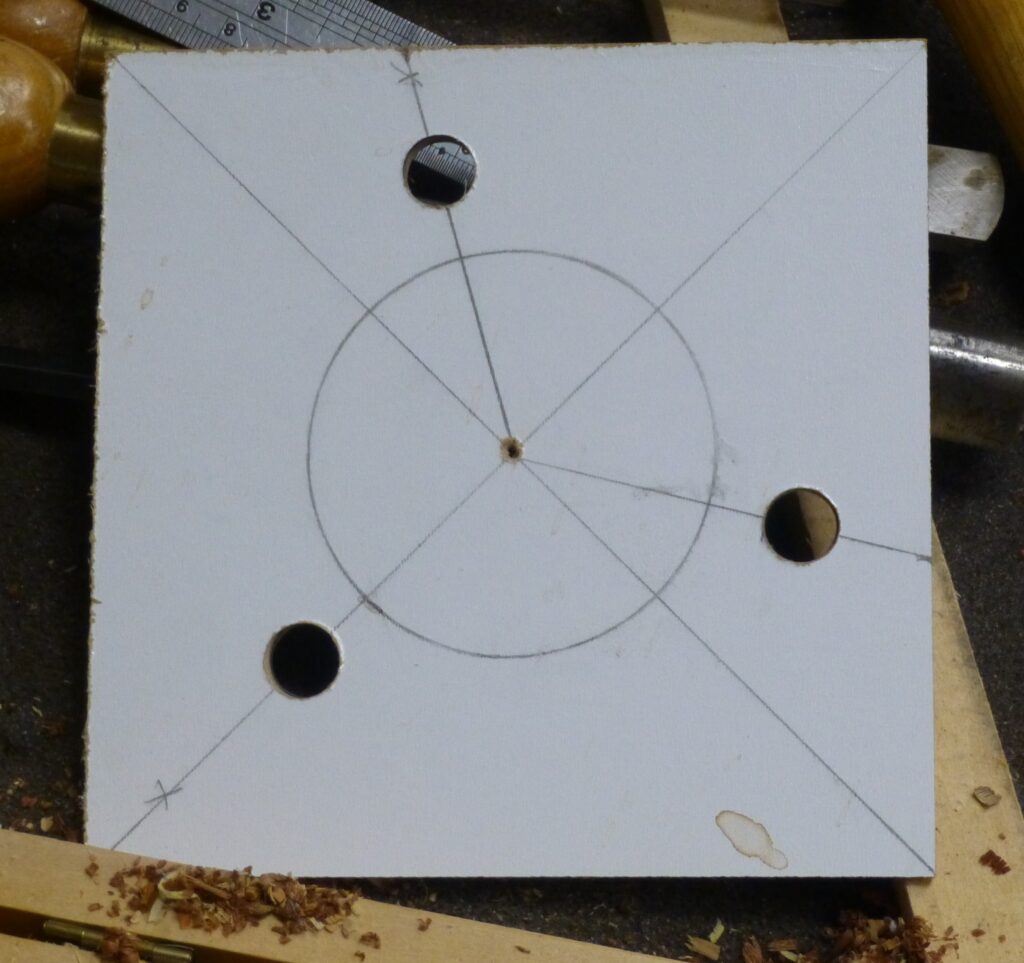
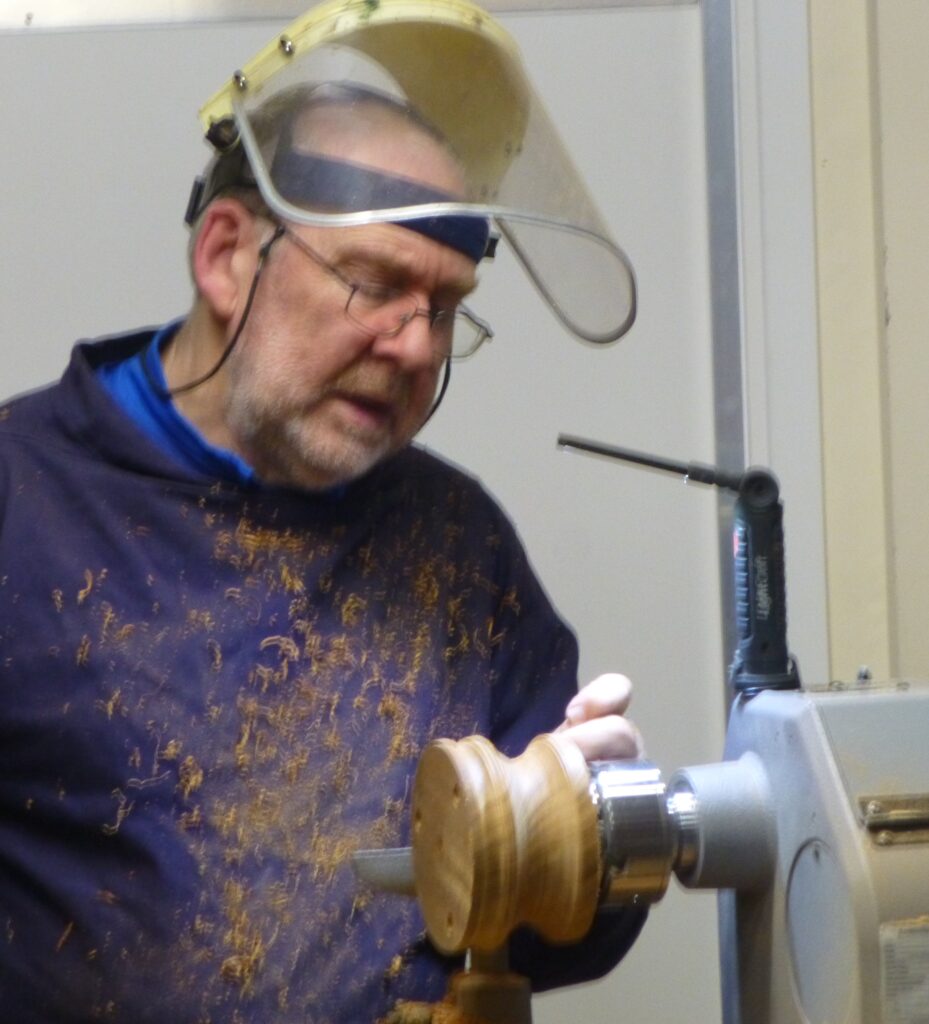
Next, he shaped the outside before making a recess to suit an LED tealight and a groove to suit the top of a jamjar. It was now becoming clear that Adrian was making a tealight lamp with this piece forming the base.
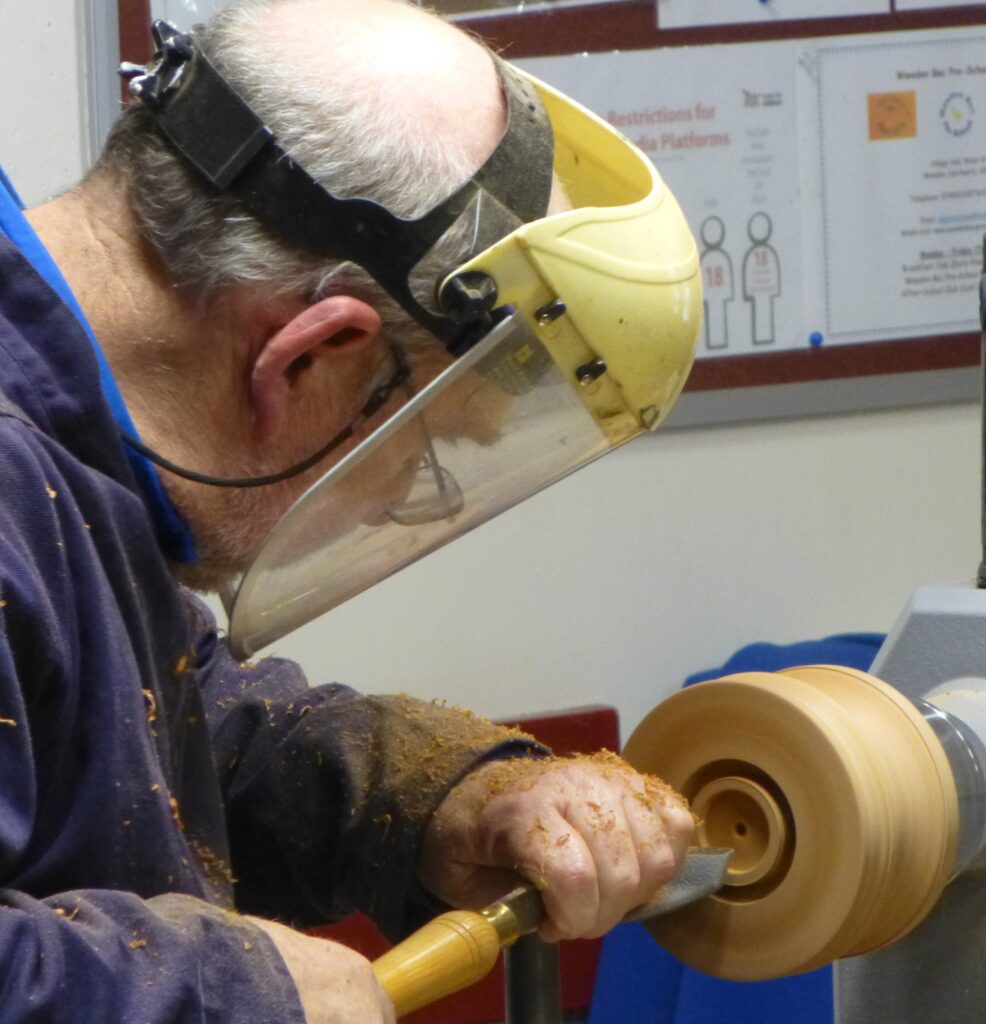
With the blank removed from the lathe he glued three uprights into the drilled holes, aligning them carefully with the template, and set the assembly aside while the glue set – and we had a break for refreshments!
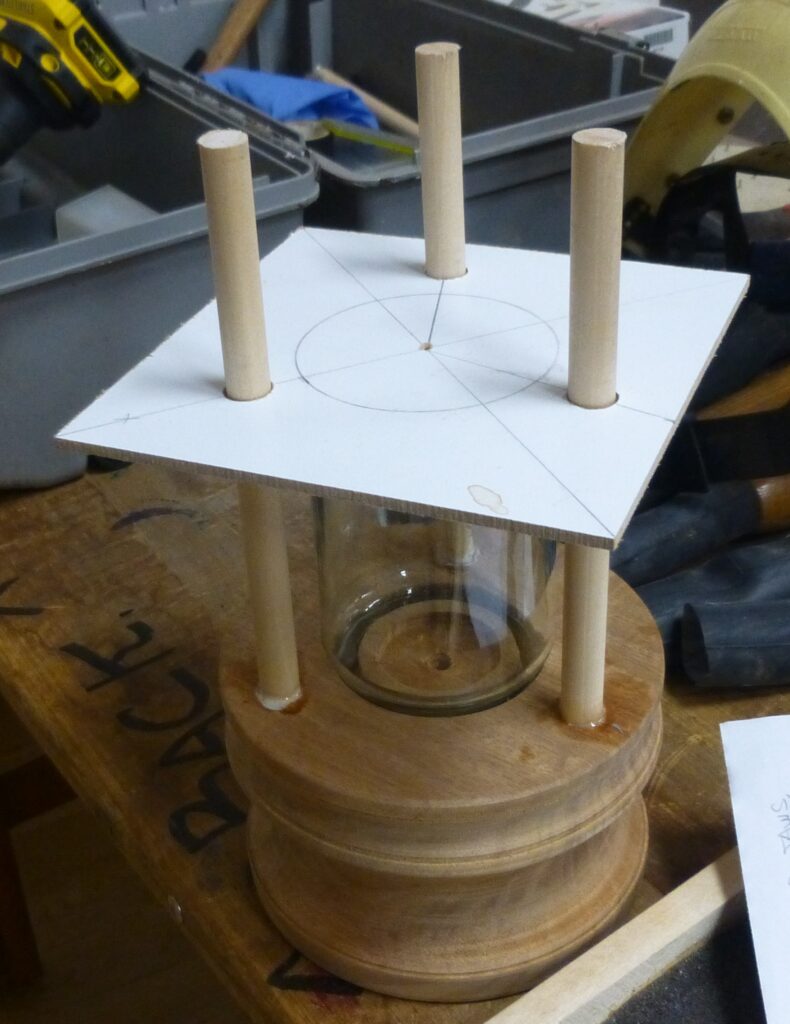
The second piece was mounted on a screw chuck, the end trued up and then a tenon recess cut into it before being reversed onto the chuck and faced off.
Once again, the template was offered up and the holes marked out on this, the top, as for the base.
Adrian then drilled a deep hole with a large forstner bit and widened it to accept the bottom of the jamjar. Why so deep? It is to allow sufficient headroom for the jamjar to be lifted up to allow removal and replacement of the tealight when the battery runs out.
The top was then formed into a flanged dome, resembling the top of a lighthouse. With time running out, Adrian explained that the top would be dry-fitted to the three uprights and the height adjusted to allow for replacement of the tealight and the uprights cut to length before the whole assembly was glued together.
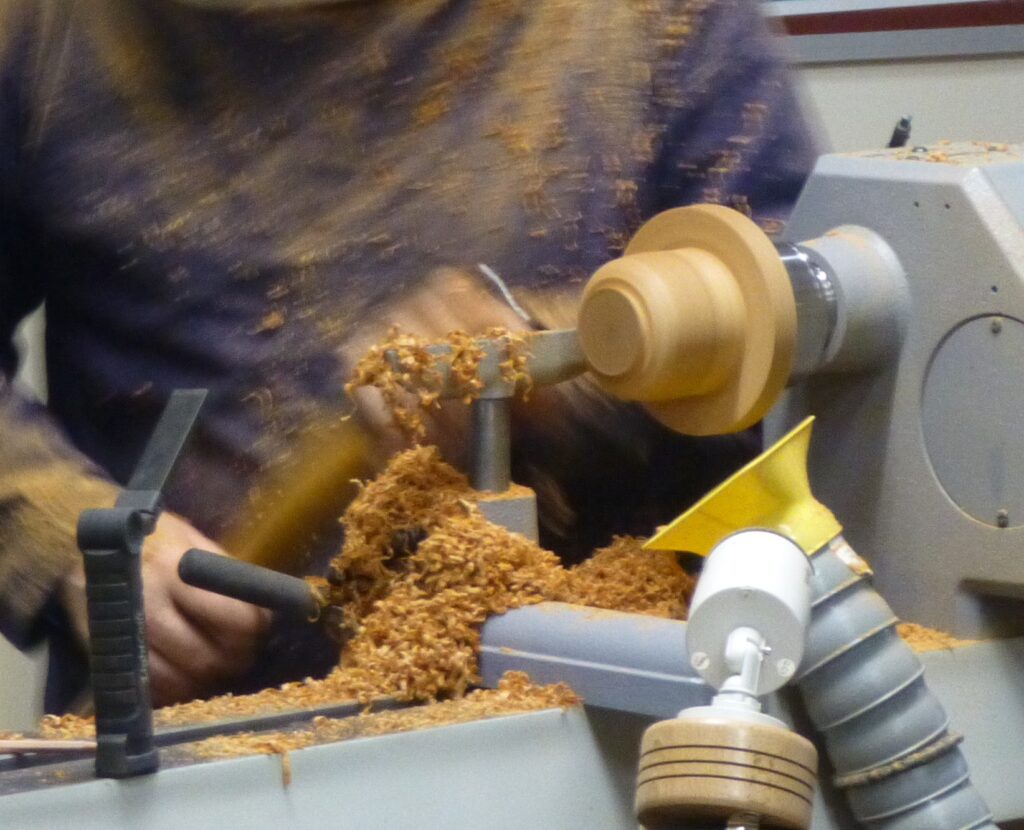
Although this was a stand-alone project, it could also be adapted to form the top part of a lighthouse with any number of variations in shape and finished design – a good inspiration for future projects.
The competition table had a good selection of items this month – some of them “edible”!
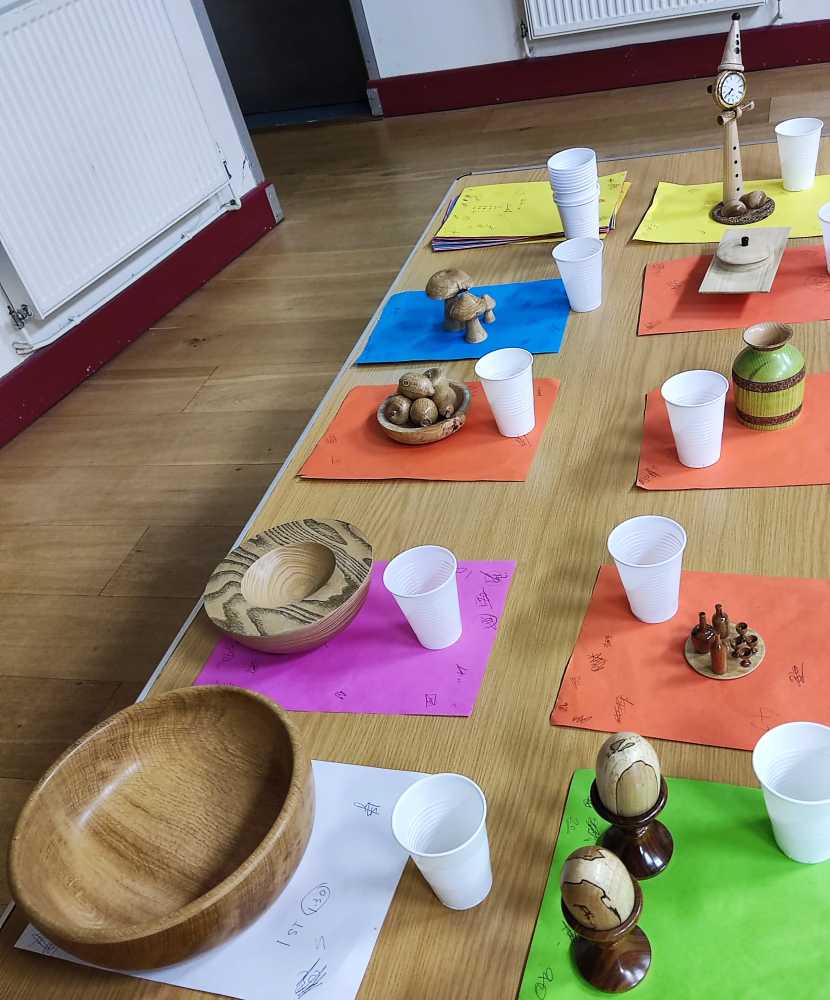
1st place was a pair of eggs in eggcups by Roger Gilbert.
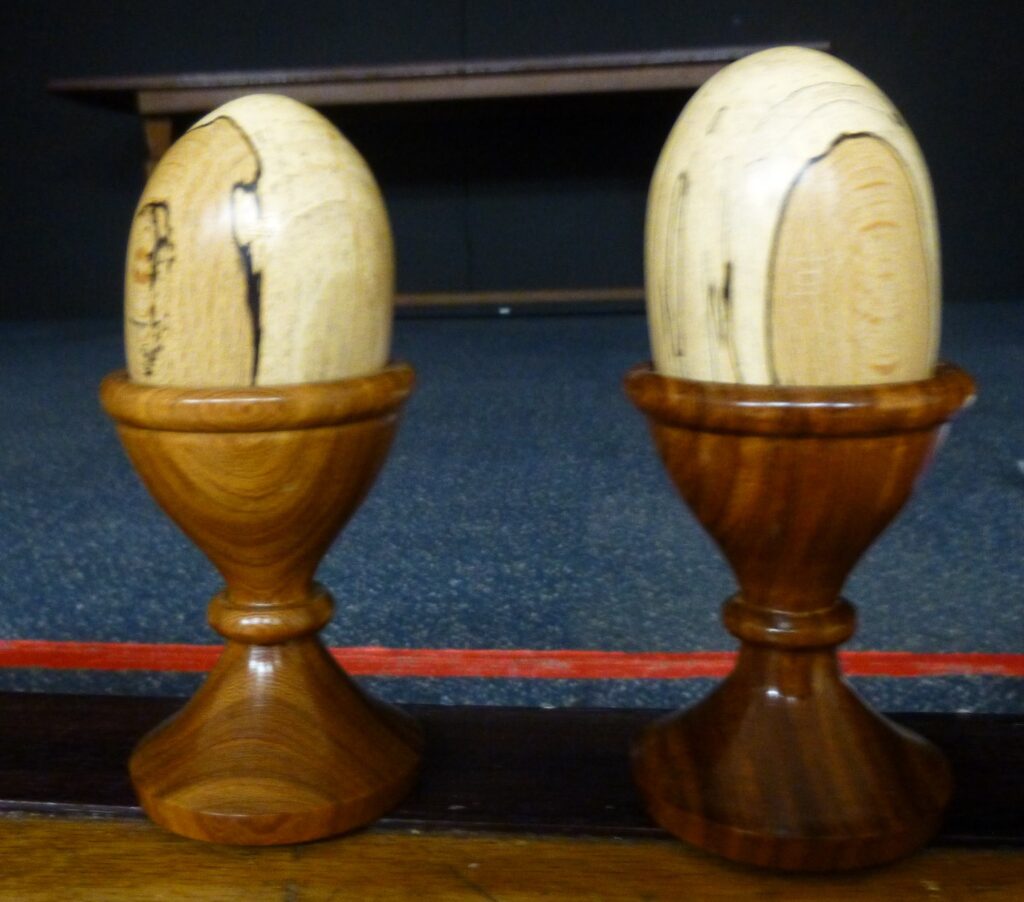
2nd place was a miniature set of drinks and goblets by Chris Harkin.
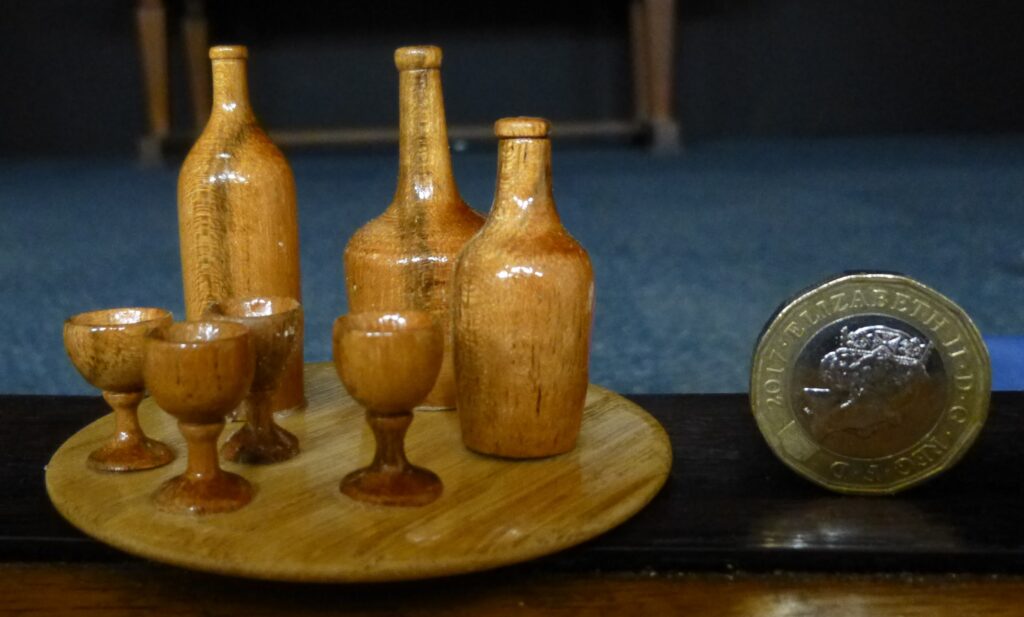
3rd place went to a winged box by Gerry Coles.
